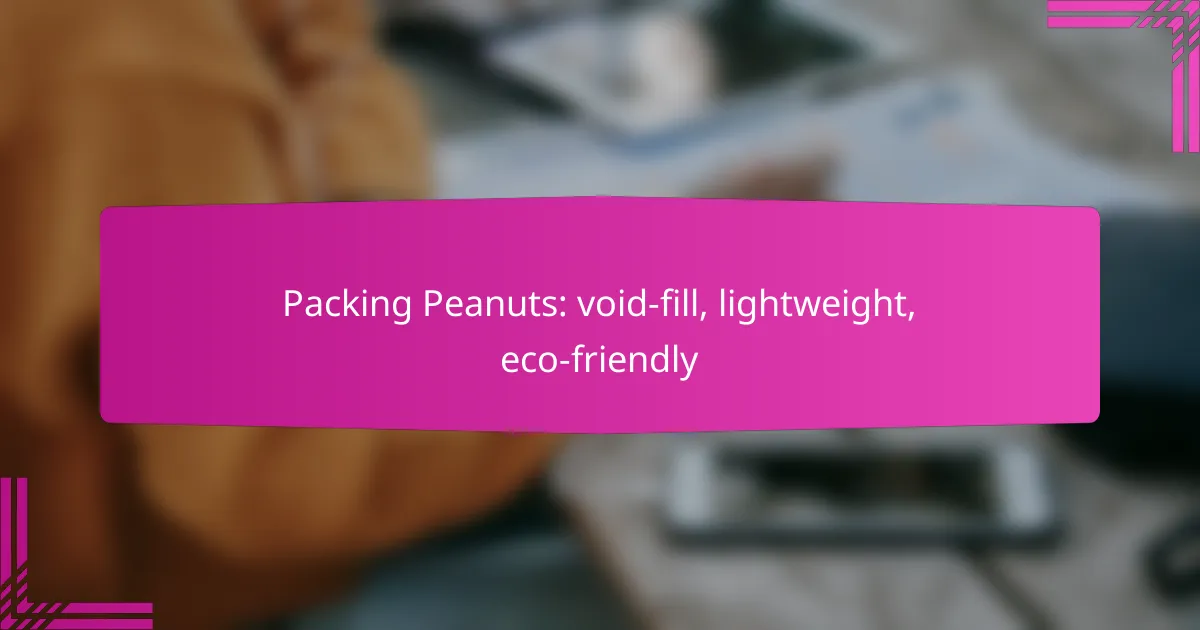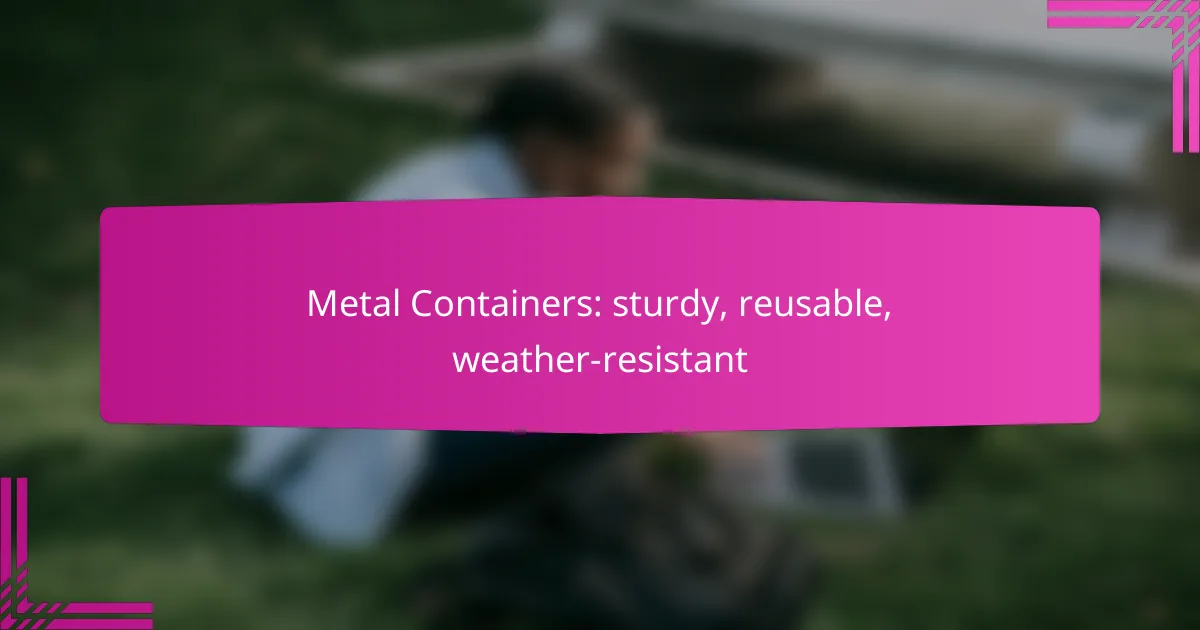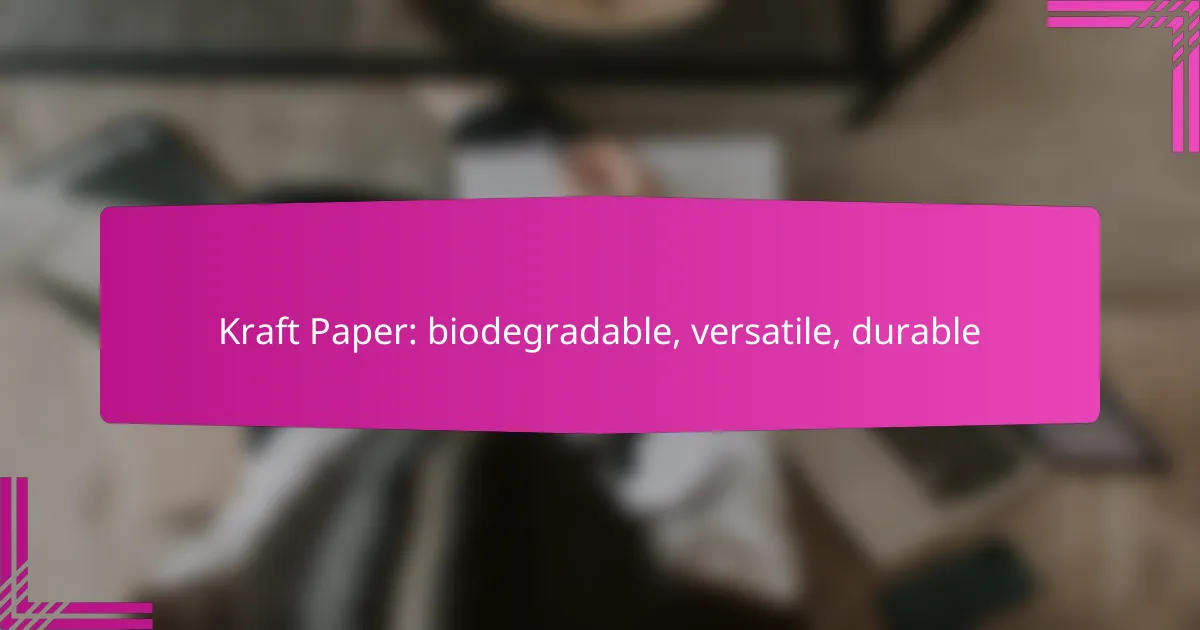Stretch film is an essential packaging solution in New Zealand, known for its clingy, protective, and stretchable qualities. It effectively secures items during storage and transportation, providing stability and safety throughout the supply chain. With various types available, including biodegradable options, selecting the right film can enhance load stability and meet environmental considerations.

What are the best stretch film options in New Zealand?
The best stretch film options in New Zealand include cast, blown, pre-stretched, colored, and biodegradable films. Each type offers unique benefits depending on the application, such as load stability, clarity, and environmental considerations.
Cast stretch film
Cast stretch film is known for its clarity and excellent puncture resistance, making it ideal for wrapping products that require visibility. It is produced by melting resin and casting it into a thin film, which results in a consistent thickness and high stretchability.
This type of film is typically used for bundling items and securing loads on pallets. When selecting cast stretch film, consider the thickness, which usually ranges from 15 to 30 microns, depending on the load requirements.
Blown stretch film
Blown stretch film is characterized by its superior strength and elasticity, making it suitable for heavy loads. It is created by blowing air into molten resin, resulting in a thicker film that can stretch significantly without tearing.
This film is often preferred for industrial applications where load stability is crucial. When choosing blown stretch film, look for options that offer a balance between thickness (typically 20 to 50 microns) and stretchability to meet your specific needs.
Pre-stretched film
Pre-stretched film is stretched during the manufacturing process, which allows for easier handling and application. This type of film is designed to maintain its stretch even when applied, reducing the risk of over-stretching and ensuring consistent load security.
Pre-stretched films are often used in environments where efficiency is key, such as warehouses. When selecting pre-stretched film, consider the stretch ratio and ensure it matches your wrapping equipment for optimal performance.
Colored stretch film
Colored stretch film is used not only for securing loads but also for color-coding and branding purposes. This type of film can help in organizing inventory and enhancing the visual appeal of products during transport.
When choosing colored stretch film, consider the opacity and color options available to ensure they meet your business needs. This film typically comes in various colors, allowing for easy identification of different products or loads.
Biodegradable stretch film
Biodegradable stretch film is an environmentally friendly option designed to break down more quickly than traditional films. Made from renewable resources, this film helps reduce plastic waste while still providing effective load protection.
When selecting biodegradable stretch film, check for certifications that indicate its compostability and environmental impact. This option is ideal for businesses looking to enhance their sustainability practices while maintaining packaging efficiency.

How to choose the right stretch film for your needs?
Choosing the right stretch film involves understanding your specific requirements for load stability, thickness, stretchability, and environmental impact. Assessing these factors will help you select a film that effectively protects your products during storage and transportation.
Consider load stability
Load stability is crucial for ensuring that your products remain secure during transit. A stretch film with good load stability will prevent shifting and damage, which is particularly important for heavy or stacked items. Look for films designed to hold their shape and provide adequate support for the weight of your load.
For example, if you are wrapping pallets of goods, opt for a stretch film that offers high puncture resistance and retains its tension. This will help maintain the integrity of your load throughout the shipping process.
Evaluate thickness and gauge
The thickness of stretch film, often measured in gauge, directly influences its strength and durability. Thicker films generally provide better protection but may be more expensive. Common gauges range from 15 to 80 microns, with heavier loads typically requiring thicker films.
When selecting a gauge, consider the type of products you are wrapping. For lighter items, a lower gauge may suffice, while heavier or irregularly shaped items may necessitate a thicker film to ensure adequate protection.
Assess stretchability
Stretchability refers to how much a stretch film can elongate without breaking. A film with high stretchability can wrap around products tightly, reducing the risk of shifting during transport. Look for films that can stretch at least 300% to maximize load containment.
Keep in mind that while high stretchability can enhance load security, it may also affect the film’s puncture resistance. Balance your needs for stretchability and durability based on your specific applications.
Review environmental impact
Environmental impact is an increasingly important factor when choosing stretch film. Many manufacturers now offer biodegradable or recyclable options that reduce waste and support sustainability efforts. Look for films that meet environmental standards and certifications.
Additionally, consider the film’s production process and materials. Films made from recycled materials can minimize environmental harm while still providing the necessary protection for your products. Always check for labels indicating eco-friendliness to make informed choices.

What are the applications of stretch film in New Zealand?
Stretch film is widely used in New Zealand for various applications due to its clingy, protective, and stretchable properties. It is particularly effective in securing items for storage and transport, ensuring safety and stability throughout the supply chain.
Pallet wrapping
Pallet wrapping is one of the primary uses of stretch film in New Zealand. It involves encasing pallets of goods to keep them stable during storage and transportation. The film’s clinginess ensures that it tightly adheres to the items, reducing the risk of shifting or damage.
When wrapping pallets, consider using a stretch film that is appropriate for the weight and type of products being secured. Heavier items may require thicker film to provide adequate support, while lighter loads can be wrapped with thinner options.
Product bundling
Product bundling with stretch film is an effective way to group multiple items together for sale or transport. This method not only keeps products organized but also protects them from dust and moisture. Bundling can be particularly useful for retail items or smaller packages that need to be shipped together.
To achieve optimal bundling, ensure that the film is wrapped tightly around the products without causing damage. Using a machine for bundling can improve efficiency and consistency, especially in high-volume operations.
Surface protection
Stretch film is also utilized for surface protection in various industries, including construction and manufacturing. It can shield surfaces from scratches, dirt, and moisture during handling and storage. This application is particularly relevant for sensitive materials like furniture or electronics.
When using stretch film for surface protection, choose a film that offers sufficient thickness to withstand potential impacts. Additionally, ensure that the film is applied smoothly to avoid air pockets that could compromise its protective qualities.
Shipping and logistics
In the shipping and logistics sector, stretch film plays a crucial role in securing goods for transport. It helps to keep items together, preventing movement that could lead to damage during transit. This is especially important for businesses that ship products across New Zealand or internationally.
When preparing items for shipping, consider the type of stretch film that best suits your needs. Films with UV protection can be beneficial for outdoor shipments, while those with higher puncture resistance are ideal for rough handling. Regularly assess your wrapping techniques to ensure compliance with shipping standards and minimize damage risks.

What are the benefits of using stretch film?
Stretch film offers several advantages, including cost-effective protection, enhanced load security, and reduced product damage. Its clingy and stretchable nature makes it an ideal choice for securing items during storage and transportation.
Cost-effective protection
Using stretch film is a budget-friendly way to protect goods. It is generally less expensive than other packaging materials, such as boxes or bubble wrap, while still providing a reliable barrier against dust, moisture, and dirt.
For businesses, the reduced need for additional packaging can lead to significant savings. Stretch film is lightweight, which can also lower shipping costs, making it an economical choice for both small and large shipments.
Enhanced load security
Stretch film enhances load security by tightly wrapping items together, preventing them from shifting during transit. This is particularly important for palletized goods, where stability is crucial to avoid accidents and product loss.
When applied correctly, stretch film creates a strong bond that holds items firmly in place. This reduces the risk of damage and ensures that products arrive at their destination intact, which is vital for maintaining customer satisfaction.
Reduced product damage
Stretch film significantly reduces the likelihood of product damage during handling and transportation. Its cushioning effect absorbs shocks and vibrations, protecting fragile items from breakage.
Moreover, the film’s moisture-resistant properties help prevent water damage, making it suitable for various environments. By using stretch film, businesses can minimize returns and complaints related to damaged goods, ultimately enhancing their reputation.



